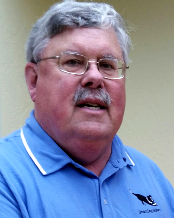
SMART DOG MININGTM
It
takes a smart dog to find hidden treasures
Earthmoving in Mining Operations
Chapter 1: Introduction
In any mining operation, a key objective is to move earth.
Doing it easily and economically is critical.
This series of articles has been prepared as a simple
introduction to the topic.
This should be considered a basic introduction to
earthmoving, experience and further study is still needed to become
an expert.
If something is not clear please contact me at
mike@smartdogmining.com.
Good equipment selection is crucial to achieving efficient
earthmoving in mining operations. Consider the machine’s operational
capabilities and equipment availability when selecting a machine for
a particular task. The
manager should visualize how best to employ the available equipment
based on soil considerations, zone of operation, and site-specific
requirements. Equipment production-estimating procedures discussed
in this manual help quantify equipment productivity.
PRODUCTION ESTIMATES
![]() EQ 1-1
EQ 1-1
The inverse of the production-rate formula is sometimes useful when
scheduling a project because it defines the time required to
accomplish an arbitrary amount of work.
![]() EQ 1-2
EQ 1-2
Efficiency Factor.
Determine the efficiency factor for the work. Operators
require breaks, and there are always secondary delays for minor
equipment repairs. Therefore, actual production time per hour is
something less than 60 minutes. In the case of a well-managed job,
expect 50 minutes of production time per hour.
![]() EQ 1-3
EQ 1-3
![]() .
.

Table 1-1 Bank to Loose to Compacted
|
1 cubic yard in natural |
1.25 cubic yards after |
0.9 cubic yards after |
|
conditions (BCY) |
digging (LCY) |
compaction (CCY) |
|
|
|
|
|
||
|
|
|
|
Converted To |
|
|
|
Material Type |
Converted From |
Bank |
Loose |
Compacted |
|
|
|
|
(In Place) |
|
|
|
|
Sand or gravel |
Bank (in place) |
— |
1.11 |
0.95 |
|
|
|
Loose |
0.9 |
— |
0.86 |
|
|
|
Compacted |
1.05 |
1.17 |
— |
|
|
Loam |
Bank (in place) |
— |
1.25 |
0.9 |
|
|
(common earth) |
Loose |
0.8 |
— |
0.72 |
|
|
|
Compacted |
1.11 |
1.39 |
— |
|
|
Clay |
Bank (in place) |
— |
1.43 |
0.9 |
|
|
|
Loose |
0.7 |
— |
0.63 |
|
|
|
Compacted |
1.11 |
1.59 |
— |
|
|
Rock (blasted) |
Bank (in place) |
— |
1.5 |
1.3 |
|
|
|
Loose |
0.67 |
— |
0.87 |
|
|
|
Compacted |
0.77 |
1.15 |
— |
|
|
Limestone |
Bank (in place) |
— |
1.5 |
1.3 |
|
|
|
Loose |
0.67 |
— |
0.87 |
|
|
|
Compacted |
0.77 |
1.15 |
— |
|
|
Table 1-3 Material Weight , Swell Percentages and Load
Factors
|
|
|
|||
|
|
Loose |
|
|
Bank |
|
|
Material Type |
(Pounds Per |
Swell |
|
(Pounds Per |
|
|
|
Cubic Yards) |
(Percent) |
Load Factor |
Cubic Yard) |
|
|
Cinders |
800 to 1,200 |
40 to 55 |
0.65 to 0.72 |
1,100 to 1,860 |
|
|
Clay, dry |
1,700 to 2,000 |
40 |
0.72 |
2,360 to 2,780 |
|
|
Clay, wet |
2,400 to 3,000 |
40 |
0.72 |
3,360 to 4,200 |
|
|
Earth (loam or silt), dry |
1,900 to 2,200 |
15 to 35 |
0.74 to 0.87 |
2,180 to 2,980 |
|
|
Earth (loam or silt), wet |
2,800 to 3,200 |
25 |
0.8 |
3,500 to 4,000 |
|
|
Gravel, dry |
2,700 to 3,000 |
10 to 15 |
0.87 to 0.91 |
2,980 to 3,450 |
|
|
Gravel, wet |
2,800 to 3,100 |
10 to 15 |
0.87 to 0.91 |
3,080 to 3,560 |
|
|
Sand, dry |
2,600 to 2,900 |
10 to 15 |
0.87 to 0.91 |
2,860 to 3,340 |
|
|
Sand, wet |
2,800 to 3,100 |
10 to 15 |
0.87 to 0.91 |
3,080 to 3,560 |
|
|
Shale (soft rock) |
2,400 to 2,700 |
65 |
0.6 |
4,000 to 4,500 |
|
|
Trap rock |
2,700 to 3,500 |
50 |
0.66 |
4,100 to 5,300 |
|
|
|
|
|
|
|
|
NOTE: The above numbers are averages for common materials. Weights
and load factors vary with such factors as grain size, moisture
content, and degree of compaction. If an exact weight for a specific
material must be determined, run a test on a sample of that
particular material.
then 1 cubic yard of clay (loose state) = 1/1.4
or 0.72 cubic yard of clay (bank state).
• The haul distances are not long enough to permit scrapers to
travel at high speeds.
• Haul distances are long enough to permit acceleration to maximum
travel speeds.
• Push tractors (also referred to as pushers) are available to
assist in loading.
|
CAUTION |
|
Operate equipment at safe speeds to prevent personal injury or premature failure of the machine’s major components. Accomplish
hauling operations safely as well
as efficiently |
|
|

o
40+
years’ experience in the mining industry with strong mineral
processing experience in Precious metals, copper, industrial
minerals, coal, and phosphate
o
Operational experience in precious metals, coal, and phosphate plus
in petrochemicals.
o Extensive experience studies and feasibility in the US and international (United States, Canada, Mexico, Ecuador, Columbia, Venezuela, Chile, China, India, Indonesia, and Greece).
Chapter 1: Introduction
Chapter 2: Dozers
Chapter 3: Scrapers
Chapter 4: Loaders
Chapter 5: Excavators
Chapter 6: Dump Trucks
